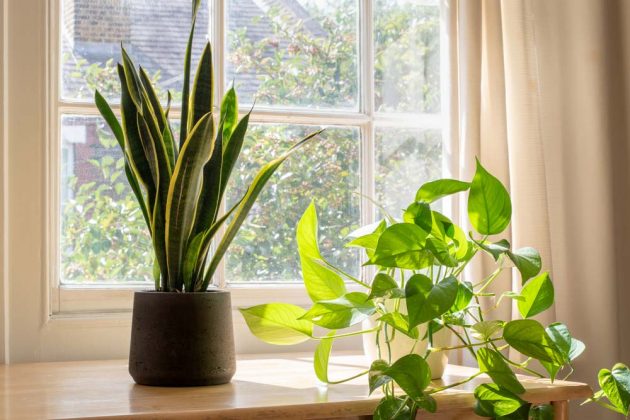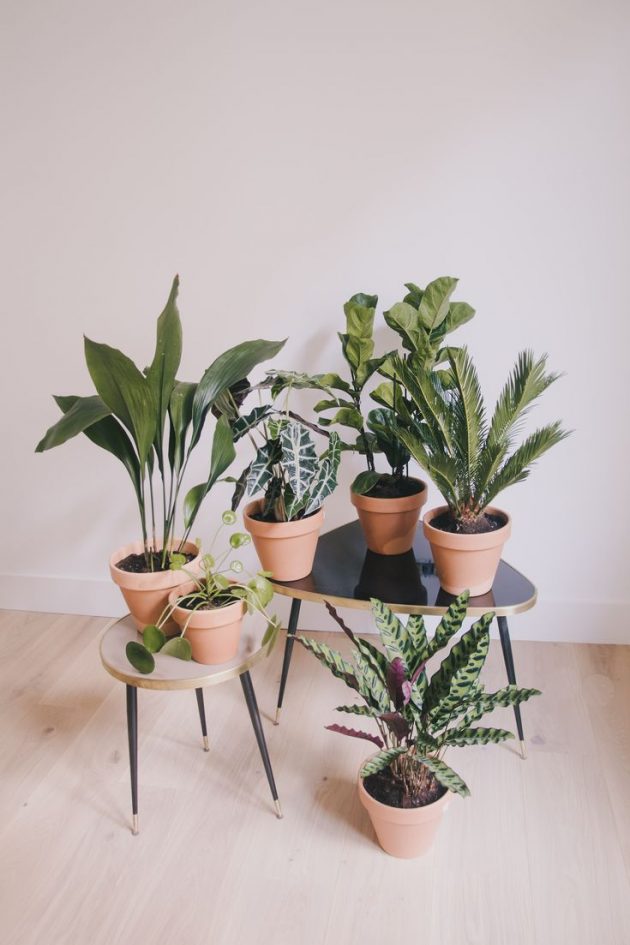Summer is the time for sunscreen, sunglasses, and a hat to protect yourself from the sun’s rays that are in full swing. But it’s not just you who needs to take care of yourself. Your plants too! Summer plant care is very important to ensure that they remain beautiful and healthy.
So, keep following this post and write down all the plant care tips in summer:
Signs that the plant is suffering from the heat
One of the first things you need to pay attention to when caring for plants in the summer is if they show signs of deficiency, such as:
Yellowing and/or burnt leaves
Yellow and burnt leaves are an indication that the plant is getting more sun than it should.
This usually happens with species of tropical climate that are used to partial shade and when they start to receive direct sunlight, they have spots on the leaves.
Loss of the shine and freshness of the leaves
Another classic sign that plants are suffering from summer is the noticeable loss of shine and luster in the leaves. Do you know that bright green shade of green? When the heat and dryness of the air are too much for it, the plant responds by going pale and dull.
The loss of freshness can also be noticed when the plant is a little “droopy” and withers.
Presence of pests
If the plant is in an unfavorable condition, it quickly becomes a target for pests. So, if you notice that your plant is being attacked by pests specifically in the summer season, this can be another clear sign that the weather conditions are not favorable for it.
The plant may be suffering from lack of water, excess light, or lack of fertilization.
Dry and dead parts
Here, the signal is more alarming. If you notice dry and dead parts on the plant, such as leaves and stems, for example, then it means that you need to act immediately. Most of the time, this sign indicates that the plant is getting more light and heat than it should, as well as low humidity.
Tips on plant care
Moisture
Make sure your plants have the moisture they need to thrive and stay beautiful. Half shade and shade plants, for example, should be sprayed with water during the day so that the leaves do not burn or dry out.
You can also count on the help of an air humidifier to ensure that the greenbacks receive the necessary moisture throughout the day. On the other hand, plants with full sun should not receive water on the leaves during the day so that they do not burn. On the contrary, leave it to offer a shower bath (with its hose or watering can) at the end of the day.
Move the plants
Every season, the position of the sun in the sky changes and it would be no different in summer. In addition to the days being longer, the sun tends to make a more linear and constant movement from east to west, unlike winter, when the sun tilts to the north side.
This means that sunlight is more evenly distributed during the summer. So if you have a plant near a west-facing window it will receive a greater amount of light than in winter. But you don’t need to decorate this sun placement. Just observe for a few days how the sunlight behaves there in your house and move the plants if you feel the need.
This change is even more recommended for species that cannot tolerate direct suns, such as semi-shade and shade plants.
Avoid pruning
Don’t prune your plants in summer, just remove twigs, leaves, and flowers that are withered, dry or diseased. This is because pruning stimulates the birth of new shoots and the excessive heat of this time of year can end up killing this shoot.
Leave the pruning to be done in the fall and spring, when the buds are more likely to develop.
Watering only in the late afternoon
Avoid watering plants during the day, especially those that are exposed to direct sunlight. The water present in the stems and leaves reflects light and can cause burns to the plant.
The ideal is to leave the watering only for the end of the day. Indoor plants should only get moisture in the leaves.
Self-watering pots
This summer plant care tip is great, especially for those who spend a lot of time outside or plan to travel.
Self-watering pots provide water for the plant as the soil becomes dry. The release is slow and gradual, so the plant will never be “thirsty”.
Correct fertilization
During the summer, the plants develop at a faster rate, even producing flowers and fruits. To accompany and account for this growth, it is essential to ensure soil is rich in organic matter. You can offer earthworm humus, manure, mamma pie, compost manure, or even chemical formulas such as NPK 10-10-10.
The lack of fertilization can compromise the development and still leave the plant exposed to pests.
Beware of pests
Get in the habit of watching your greenbacks to detect the presence of pests. Examine the leaves, including the back, stem, and substrate.
If you notice any invader in the vessels, do the necessary treatment. A good tip is to use neem oil. In addition to being a natural product that does not harm plants, it is also very efficient in combating the most diverse types of pests.
Take care of the substrate
Among the plant care in summer that is indispensable is the substrate. The sun and heat dry out and harden the soil, making it difficult to absorb water from irrigation and even fertilizer.
To avoid this problem, cover the exposed soil with dry leaves, sawdust, or straw.
This prevents the substrate from losing moisture to the environment and remains healthier for the plant.

















